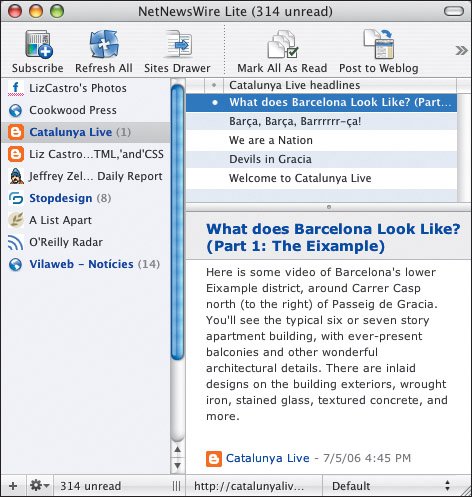Describe your item by using one or more of the following elements. Again, use the syntax
<tag>content</tag>:
Use the
<title> element to identify each item in your feed.
Use the
<link> element to point your visitors toward the full version of the article on your site.
Use the
<description> element for either a summary, excerpt, or for the entire article. The description may contain (X)HTML (except for iTunes).
Use
<guid> (which stands for
globally unique identifier) to enclose a permalink URL or other unique value so that aggregators can have some way of uniquely identifying your feed articles. If the link
is a permalink, add
isPermaLink="true" to the initial
guid tag. In this case, the
guid element must be a URL.
Use
<pubDate> to give the publication date for the item. The date must be formatted according to RFC 822 as described in the tips on page
381.
Use
<author> for the email address of the person who created the item.
Use
<category> to tag the article with a category so that it's easier for your prospective audience to find it.

Use
<comments> to point to the URL where comments are allowed for your item.
 Best javascript editor debugger
Ajax website
Best javascript editor debugger
Ajax website
 Best javascript editor debugger
Ajax website
Best javascript editor debugger
Ajax website